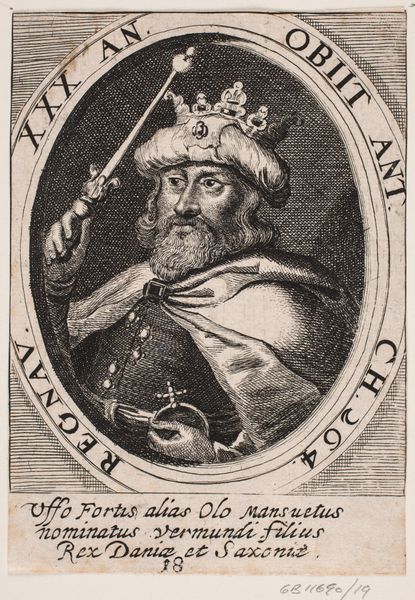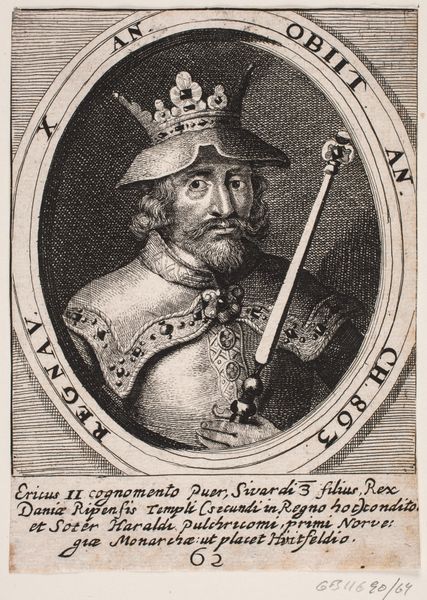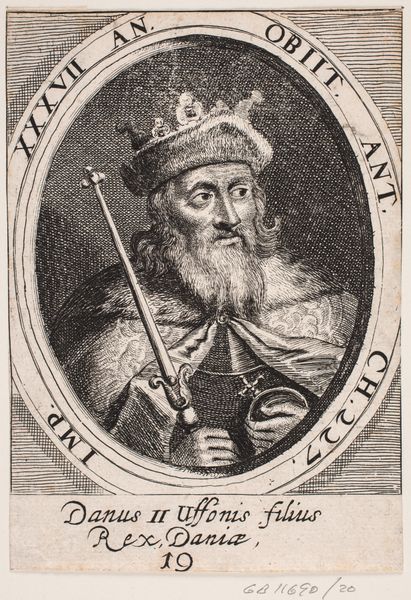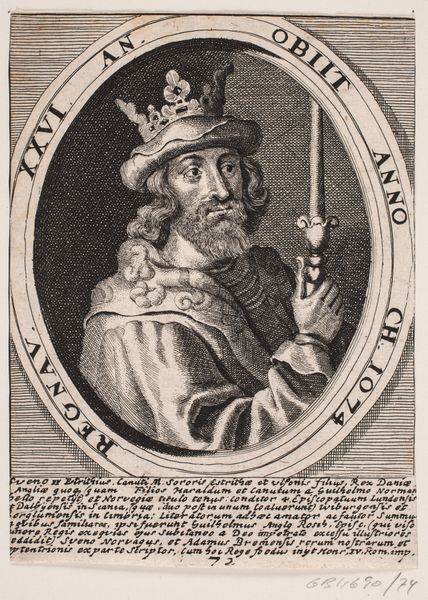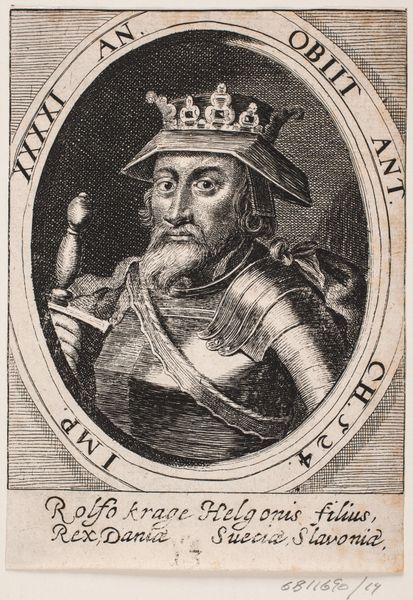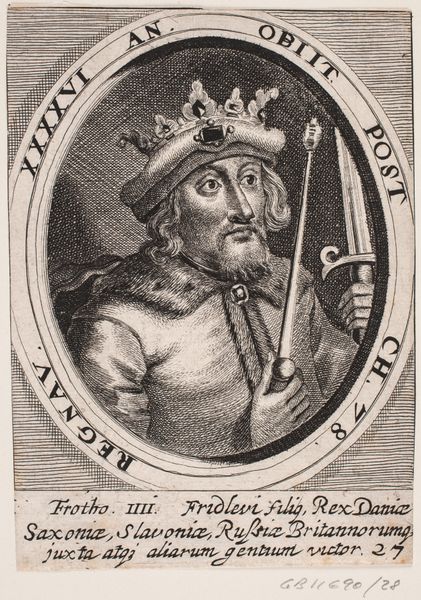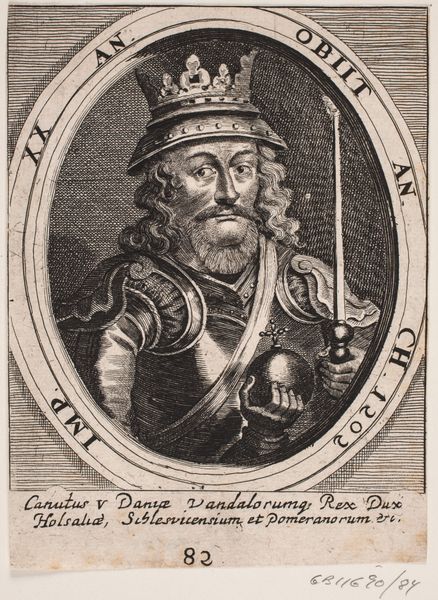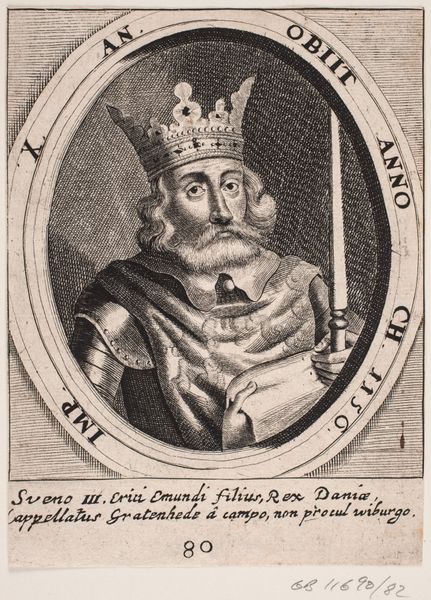
print, engraving
#
portrait
#
baroque
# print
#
caricature
#
figuration
#
line
#
portrait drawing
#
history-painting
#
engraving
Dimensions: 140 mm (height) x 100 mm (width) (bladmaal)
Editor: This engraving from 1646, titled "Harald Blåtand," presents a portrait encased in an oval frame. The sitter, presumably Harald Blåtand himself, holds a massive sword, and is adorned with what appears to be armor, an elaborate collar and a wide brimmed hat adorned with a royal crown. There’s a stern quality about him, enhanced by the formality of the composition. What symbols jump out at you in this depiction? Curator: This piece reverberates with cultural memory. Beyond a simple portrait, it seeks to cement Harald Blåtand, or Bluetooth, as a figure of power, not just through his crown and sword, symbols readily understood, but through careful placement within the pictorial tradition of the heroic leader. Notice how the text surrounds the oval – framing the subject as both historical and enduring. What impression do you get from the inscription's presence within the visual space, not simply beneath the image? Editor: It does add weight to the portrait's sense of legitimacy, situating it within a scholarly context. The visual gives a strong sense of authority to his person. Curator: Exactly. The armor, sword, even the text, construct a narrative, embedding Blåtand within a visual lineage of strength and authority. Think about how portraits like this function. It's not just about representing an individual; it's about projecting power and legacy across time and cultural interpretation. Editor: So, it's less about capturing an individual likeness and more about solidifying a cultural and historical image. I see it as an early attempt to influence our current conception of a national founder. Curator: Precisely. We witness here the making of a symbol. Editor: This conversation has certainly made me rethink what a portrait from this period represents; it is an intentional historical interpretation, not just an image of a person.
Comments
No comments
Be the first to comment and join the conversation on the ultimate creative platform.
